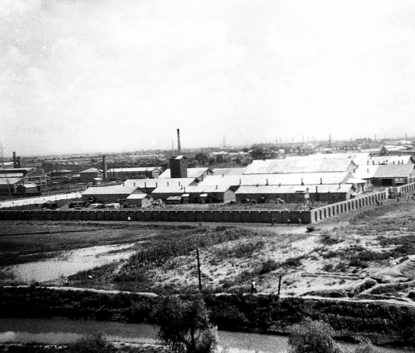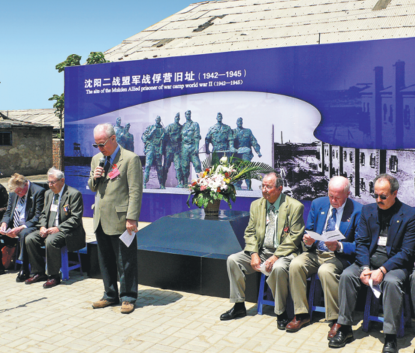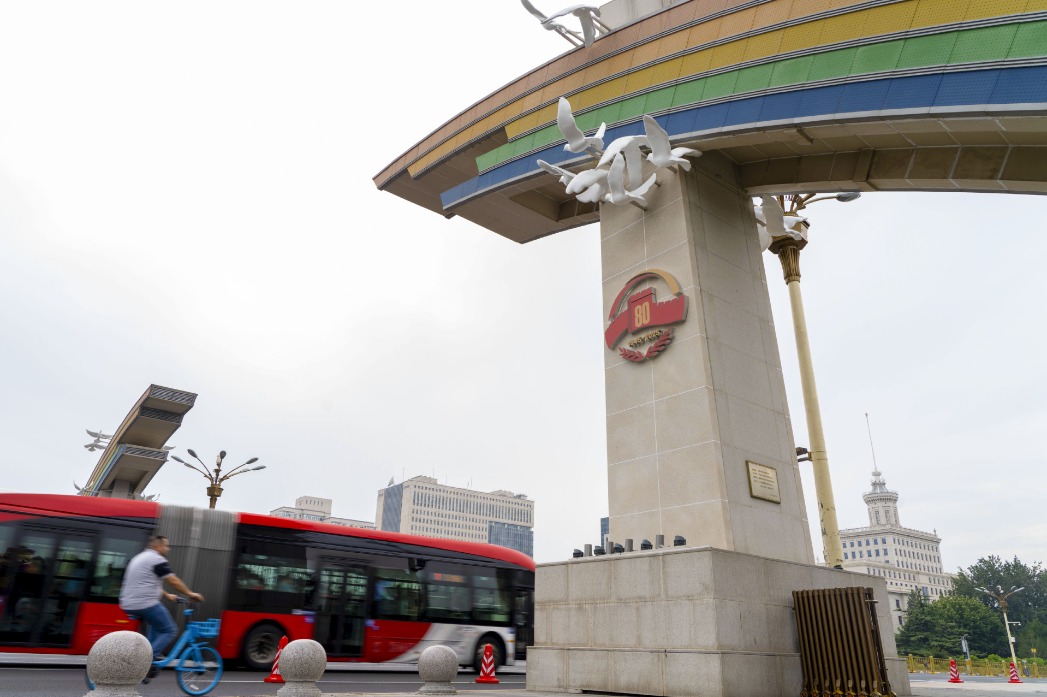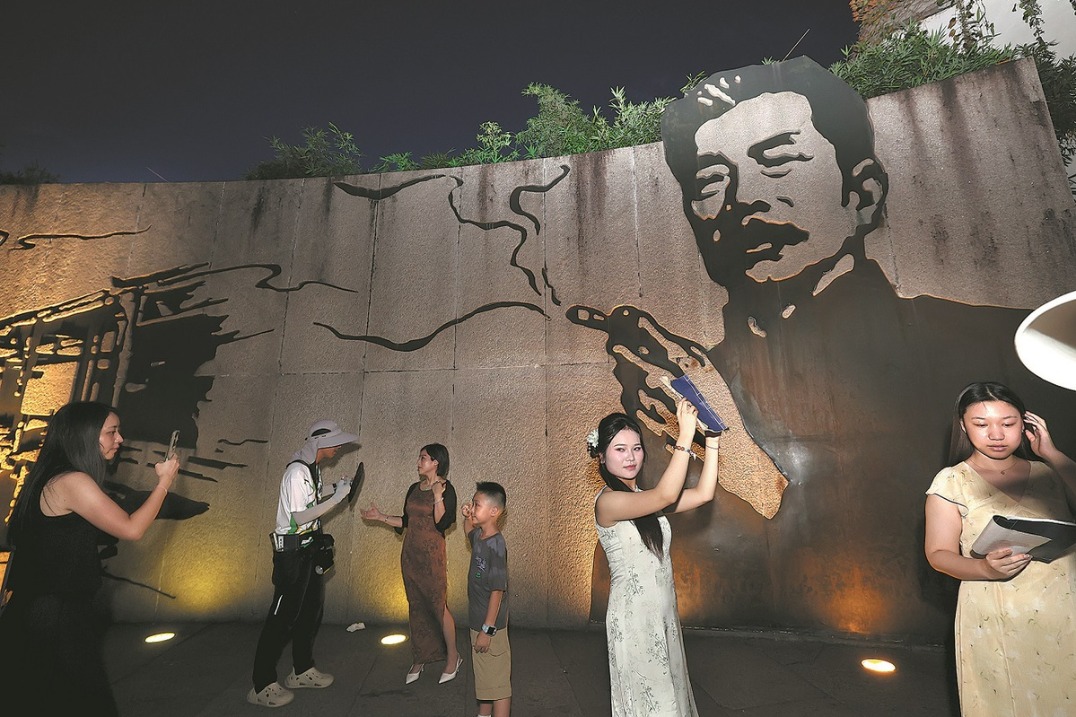Enduring the horrors of POW camp
'Mukden' bears scars of unimaginable cruelty during WWII, Zhao Xu and Wu Yong report in Shenyang.

"That the present situation i.e. the war is over between July the first and the 30th September 1943, the party of the first part M.T.presents the party of the second part with two bottles of Haig's whisky."
These words come from a handwritten agreement dated March 3,1943, penned by Ronald Joy, who entered into the pact as "the party of the second part" with fellow prisoner of war M. Thompson ("the party of the first part") while both were imprisoned in a Japanese World War II camp located in present-day Shenyang, Liaoning province, in Northeast China, then occupied by invading Japanese forces.
Known as the Mukden POW Camp — "Mukden" being the former name of Shenyang, or alternatively the Hoten Camp — the facility housed over 2,000 Allied prisoners, primarily Americans, British, and Australians, including the two men named above.
"When they made this agreement, they had been in the camp for less than four months and still held hope," says Li Zhuoran, deputy director of the Shenyang WWII Allied Prisoners Camp Site Museum, which stands on the original site of the former Mukden Camp.
Yet, that hope wore thin, smoldered, and came perilously close to being extinguished by the prolonged war and the men's drawn-out captivity, which lasted until August 1945. "Their time in the camp was marked by relentless physical, mental, and emotional trials," Li continues, "as they endured every form of hardship — including the brutal winters of Northeast China, which claimed nearly 200 POW lives in the few months between late 1942 and early 1943, just before that agreement was made."
Many of those who perished that bitter winter had already survived a gauntlet of horrors: the initial bombing of the Philippines — launched mere hours after Japan's surprise attack on Pearl Harbor; the notorious Bataan Death March, where surrendering American and Filipino soldiers were forced to trudge over 100 kilometers through jungle heat and brutality, collapsing one by one along the way; and the harrowing journey aboard a Japanese "Hell Ship" — in this case, the Tottori Maru — so squalid and inhumane it earned the grim title of a "floating tomb" before delivering its emaciated captives to Busan, Korea, from where they boarded a train to Shenyang. (The British and Australian POWs of the camp mainly came from Singapore and Hong Kong.)
"As solid as a battleship's armor" — that was how Jonathan Wainwright, Commander of Allied forces in the Philippines during World War II, described the frozen earth of Northeast China. It was so impenetrable that the digging of burial pits for deceased POWs had to be delayed until late spring. In the meantime, bodies were stacked in a wooden storage shed, their blankets stripped away by fellow prisoners struggling to survive the relentless cold.
In Allied Prisoners of War in China (2018), Chinese historian Yang Jing records former POW Robert Rosendahl's account of the gruesome aftermath of winter: As corpses thawed, they began to emit a stench that attracted wild dogs — animals the starving prisoners killed and ate without hesitation.
The Mukden Camp, as it came to be known, did not officially open until July 1943. Before that, prisoners were temporarily housed in disused army barracks. Spanning nearly 50,000 square meters and holding over 2,000 Allied prisoners, the Mukden Camp was the largest of Japan's 115 POW camps across Asia during WWII. It also had two sub-camps located in Jilin province further north, where General Jonathan Wainwright and other high-ranking Allied officers were confined.
Today, the camp's outer walls — once topped with barbed wire and watched over by guard towers — are long gone. Yet, a water tower and a tall chimney, once linked to the camp's boiler room, still stand. In their shadow, a new building has been erected to display a miscellany of artifacts — mementos from days the POWs had desperately hoped would soon come to an end. These included personal effects like tin lunch boxes, cigarette holders and cases, and rather surprisingly, a gold tooth that once belonged to a POW.
Condemned to forced labor in factories that supported Japan's military-industrial effort, some POWs secretly carved tobacco pipes from large chunks of wood as a subtle form of sabotage. Others engaged in riskier acts: According to former Mukden Camp prisoner Ralph Griffith, those assigned to the blueprint office deliberately inserted small errors into technical drawings, while others simply threw tools into the area to have concrete poured.
On display at the museum are the work badges some of the POWs had worn, with their assigned numbers. These were the numbers by which they were remembered — called out by the Japanese during roll call, stripped of name and identity. Griffith was simply No 552.
Life in the camp, marked by debilitating winter cold, chronic starvation, constant beatings, and unrelenting disease, took a devastating toll. Edmund Jemison — prisoner No 253 — nearly lost his sight due to severe malnutrition and required extensive treatment after the war.
Keeping that in mind, it's particularly heart-wrenching for a museum visitor to read the letter written by William Burrola to his father, telling the old man that he and his elder brother Joseph — both imprisoned at Mukden — "are being well taken care of". "It was sure good to see snow gain," wrote Burrola, noting that "it is another Christmas".
Some attempted to escape. On June 23, 1943, three American POWs escaped from Mukden Camp but were recaptured and executed on July 31. The youngest, Ferdinand Meringolo, was just 20 years old. Their escape was aided by Gao Dechun, a 19-year-old Chinese laborer at the factory where they worked, who risked his life to obtain a map of Northeast China. For his bravery, Gao was severely beaten and sentenced to 10 years in prison — a term terminated by Japan's surrender on Aug 15, 1945.
On Sept 2, 1945, aboard the USS Missouri in Tokyo Bay, General MacArthur signed Japan's Instrument of Surrender, before passing the pen to General Wainwright, honoring him with a deeply symbolic gesture.
In a later interview, Griffith recalled his "first free day", when a little Chinese girl at the camp gate took his hand and motioned for him to follow. She led him to a nearby home, where he was welcomed with rice wine and a hot meal.
"When I signed up for the army at 17, I had my choice between Hawaii, Alaska, Panama and the Philippine Islands. I asked the recruiting officer which was the farthest away and told him that's what I wanted," he recalled.
In May 2007, Griffith — who passed away in 2020 at the age of 96 — returned to Shenyang for the first time since his release in 1945. Today, a wax figure of him as an elderly man sits alone on the lower bunk of a bed inside the sole surviving two-story brick barrack once used by POWs — a quiet tribute to his visit.
"Grin and bear" — that was Griffith's way of enduring. Others, like Joy, who had wagered on when the war would end, sought escape through sleep, described by one POW as their opiate.
On the reverse side of the agreement, Joy had scrawled a tender poem to his young wife:
"I'm getting tired so I can sleep,
And sleep well enough to dream,
And dream of you, my dear, the whole night through …"



Today's Top News
- Xi says SCO shoulders greater responsibilities for safeguarding peace, boosting development in world with uncertainties
- Xi meets Vietnamese prime minister
- Xi meets Turkish president
- How Xi champions Shanghai Spirit to foster new type of international relations
- China improves memorial facilities to mark victory against Japanese aggression
- Xi, Modi agree China, India are partners instead of rivals






























